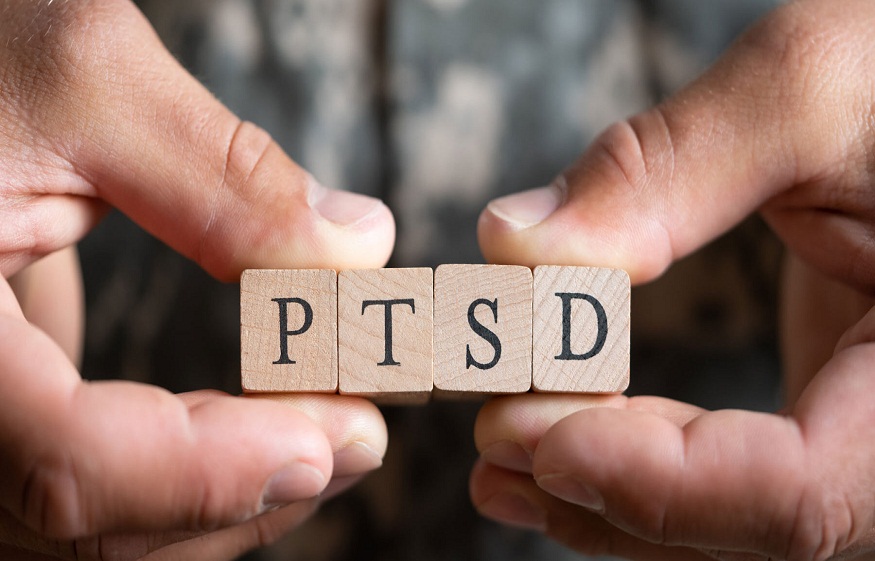In modern society, the term Post-Traumatic Stress Disorder (PTSD) is easily thrown around like confetti at a party, however, for millions of individuals, it is an everyday struggle that affects and reshapes their interactions, careers, and life in general. The good news is that PTSD therapy offers a dependable way to heal and restore life ravaged by trauma.
In this blog, we will examine what PTSD is, its manifestation, various available therapeutic pets, and why one needs to seek professional help.
What Is PTSD?
Mental disorders can stem from the various forms of trauma an individual endures, whether directly or vicariously through loved ones. Some examples of this distressing phenomenon are serious injuries, witnessing or being involved in military combat, violent attacks, unexpected loss of a family member, or even natural disasters.
PTSD symptoms are commonly experienced under four broad categories:
- “Intrusive Memories”: flashbacks, nightmares, disturbing thoughts, and overly active inner dialogue.
- Avoidance: Keeping distance from trauma reminders.
- Negative Changes in Thinking and Mood: Memory problems, guilt, or shame.
- Changes in Physical and Emotional Responses: Hyper-vigilance, irritability, and other active responses.
PTSD Treatment: An Immediate Action Is Required
Ignoring trauma symptoms will not make them disappear over time. Conversely, avoidance may worsen the condition over time. Personal confrontation, processing, and healing from persistent haunting scars are possible through PTSD therapy, thus making it indispensable.
The following outcomes are common if PTSD is left untreated:
- Substance use disorders
- Depression or anxiety disorders
- Interpersonal conflicts, including broken relationships
- Suicidal ideation and self-harm
Professional assistance should be sought immediately and is, without a doubt, a dire necessity.
PTSD Therapy: Customized Strategies Drawing Science-Based Evidence
Effective therapy is achieving set goals. Separate strategies depending on the indicated nature of trauma and personal needs have proven their effectiveness. Let us review the most acknowledged methods:
1. Cognitive Behavioral Therapy (CBT)
CBT is amongst the most sought-after therapies for PTSD. It aids in the recovery of individuals by restructuring their negative thoughts, addressing challenging memories, and invoking them safely and within a controlled setting.
Subtypes include:
- Cognitive Processing Therapy (CPT): Concentrates on challenging and changing detrimental attitudes connected to trauma.
- Prolonged Exposure Therapy (PE): Gradual desensitization through memory triggering and recollecting of trauma is used.
2. Eye movement Desensitization and Reprocessing (EMDR)
EMDR is one of the more popular forms of treatment as it’s recognized fairly widely to be effective for trauma therapy. Recalling trauma while following specific bilateral movements helps the brain retrain those memories to be less toxic.
3. Somatic Experiencing
This therapy helps in relieving chronic pain by focusing on the bodily aspects of healing trauma as well as the body’s stored physical strain.
4. Group Therapy
Support groups build community as patients tell and listen to stories. Telling one’s story can be comforting and sometimes even healing.
Therapy for PTSD: Who Can Take Advantage?
PTSD can affect: veterans, first responders, survivors of abuse, victims of accidents, or anyone enduring prolonged and stressful situations.
Signs of PTSD Therapy Needs:
- Extreme jumpiness or vigilance.
- Remotely triggered memory recall avoidance.
- Numbing of feelings or emotional detachment.
- Constant fear, guilt, or persistent shame.
- Sleep and concentration difficulties.
Years after trauma, therapy remains advantageous.
Family and Social Support
Therapy is not just an individual endeavor; it is a collective family affair. PTSD education for relatives helps integrate the family into the healing journey, improving family dynamics. Supportive psychotherapy, educational groups, or therapeutic workshops strengthen families to provide love and care.
Honesty, empathy, patience, and psychological safety fostered in these settings profoundly impact recovery.
PTSD Therapy Online
PTSD therapy is now more accessible than ever with the rise of telehealth. Remote sessions provide flexibility as well as ease geographical and mobility-related barriers.
HIPAA compliant video sessions with mobile journaling or mood tracker apps, and text-based interaction for the self-conscious, is steadily becoming a norm.
Holistic Therapies and Living Well
Apart from the more conventional modalities, holistic therapies are useful in easing PTSD recovery. They consist of:
- Yoga and Mindfulness: Assists in the reduction of stress and helps to reconnect the mind and body.
- Art and Music Therapy: Offering non-verbal forms of Art and Expression for Post Traumatic Stress Disorder facilitates the processing of trauma.
- Nutritional Counseling: Enhances physical health, which improves mental wellness.
- Exercise and Outdoor Therapy: Increases endorphins and provides a sense of routine and empowerment.
Making lifestyle changes aids healing and can be incorporated into a treatment plan to enhance recovery.
Stigma and Help-Seeking
Treatment is often sought at a later date due to stigma, guilt, and fear associated with help-seeking. Changing these factors is paramount.
PTSD therapy is not an indicator of weakness, it is rather an act of bravery.
The more these are normalized, the better it will be for those suffering in silence.
It is important to note that psychological injuries must be treated with the same level of care as physical injuries.
PTSD Therapy Sessions: What to Expect
The initial evaluation with a therapist includes assessing the symptoms, trauma experienced in the past, and current readiness to engage with various approaches.
Clients in continued sessions may:
- Understand how to cope with specific issues
- Examine the trauma that triggers the reactions
- Participate in role-playing or exposure exercises
- Track their progress through journals or using symptom scales
- Achieve specific goals for the time between therapy sessions.
Therapy is always at the client’s tempo. You do not have to talk about anything you are not ready to discuss.
How long does therapy for PTSD take?
The duration of therapy differs from one person to the other. Because of the organized CBT methods, some people may improve in as little as 8 to 12 weeks. Others who have experienced more complex cycles of trauma will take a longer duration.
With the right help, you can always make progress.
Why is it important to have a PTSD specialist therapist?
Not every therapist is properly trained when it comes to handling PTSD cases so make sure you check on the:
- Trauma-informed care certification.
- Work experience with veterans, abuse victims, and first responders.
- Evidence-based practices, and a compassionate approach to therapy.
Making the right decisions about your mental health specialist directly correlates to the outcome of your treatment.
Final Thoughts: There is Hope and Help To Overcome PTSD
PTSD is often an experience of continuous burden with seemingly no end. The burden does not have to last a lifetime. Recovery and the process to get there are achievable. It is possible as long as someone is willing to do it. If you’re ready to take the first step to make changes for yourself or someone else, now is a great time to begin.
To break the chains of trauma, First Responders of California emphasize that it needs to be put into action: working with a mental health professional to get an expert trauma-focused evaluation and therapy.
Take the first step with a professional PTSD assessment and therapy to start the journey of living life free from the shackles of trauma.
Commonly Requested Information About PTSD Therapy
How To Self-Diagnose The Need For PTSD Therapy?
If you find yourself experiencing persistent memories of deep-seated fears, engaging in nightmares, extreme anxiety, or behavioral cutoffs with a certain event, it is associated with a past traumatic ordeal, consulting a mental health professional could be the most appropriate next step.
Is therapy enough for PTSD treatment?
Therapeutic intervention works for a vast majority of people—but not everyone. Some people find equal or additional relief in a combination of therapies and medications.
Can PTSD reemerge after being treated?
Clinical regression is a possibility, especially with the introduction of novel stressors. This is why continual care is important—to offer ongoing support, coupled with maintenance strategies adopted post-therapy.
Is remote therapy for PTSD just as effective as traditional?
Research reveals that remote therapy can be equally effective, especially when using established paradigms of CBT or EMDR.
Will insurance fund therapy for PTSD?
Several insurance programs do offer coverage for mental health services, such as therapy for PTSD. For more details, please contact your provider.

